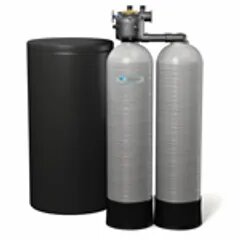Water Filtration: A Comprehensive Resource Guide
Water is an essential resource that sustains life, and access to clean and safe drinking water is a fundamental human right. However, with the increasing concerns over water pollution and contaminants, it has become crucial to ensure the quality of the water we consume. This is where water filtration systems play a vital role. In this comprehensive guide, we will explore the importance of water filtration, different types of filtration methods, and delve into the world of reverse osmosis, a highly effective water purification technique.
Understanding Water Filtration
Water filtration is the process of removing impurities, contaminants, and unwanted substances from water to make it safe for consumption. It involves passing water through a physical barrier or a chemical medium that traps or neutralizes harmful elements. Water filtration can improve the taste, odor, and overall quality of water, providing peace of mind for you and your family.
Types of Water Filtration Methods
- Activated Carbon Filtration: This method uses activated carbon, which has a large surface area and an affinity for organic compounds. It effectively removes chlorine, volatile organic compounds (VOCs), and unpleasant tastes and odors from the water.
- Sediment Filtration: Sediment filters remove larger particles, such as sand, silt, and rust, through a physical barrier. They are commonly used as pre-filters in water filtration systems to protect and extend the life of subsequent filters.
- Reverse Osmosis (RO): Reverse osmosis is a highly efficient water purification process that removes a wide range of contaminants. It utilizes a semi-permeable membrane to separate impurities from water molecules, producing clean and pure drinking water.
The Power of Reverse Osmosis
Reverse osmosis has gained popularity as one of the most effective water purification techniques available. It can remove contaminants like bacteria, viruses, heavy metals, nitrates, pesticides, and pharmaceutical residues. Here’s a breakdown of the reverse osmosis process:
- Pre-filtration: The water passes through sediment and activated carbon filters to remove larger particles and chlorine, which could damage the RO membrane.
- Reverse Osmosis: The water is forced through a semipermeable membrane, allowing only pure water molecules to pass through. Contaminants are left behind and flushed away.
- Post-filtration: The purified water goes through a final carbon filter to enhance taste and remove any residual odors.
Benefits of Reverse Osmosis
- Improved Water Quality: Reverse osmosis provides a high level of purification, ensuring the removal of a wide range of contaminants that may be present in your water supply.
- Great Taste: By eliminating impurities, reverse osmosis improves the taste and odor of your drinking water, making it more enjoyable to consume.
- Convenience: Having a reverse osmosis system at home means you have access to clean and safe drinking water at any time, without the need for bottled water or constant refills.
- Environmental Friendliness: Using a reverse osmosis system significantly reduces the consumption of single-use plastic bottles, contributing to a healthier planet.
Testing Your Water
Before deciding on a water filtration system, it is important to test your water to determine the specific contaminants present. Local health departments or certified laboratories can provide water testing services. Understanding your water quality will help you select the most suitable filtration system for your needs.
Maintenance and Replacement
Regular maintenance is essential to ensure the continued effectiveness of your water filtration system. Filters need to be replaced at recommended intervals to prevent clogging and maintain optimal performance. Follow the manufacturer’s guidelines for maintenance and replacement schedules to prolong the life of your system.
Conclusion
Water filtration is a crucial step towards ensuring the safety and quality of our drinking water. From activated carbon and sediment filtration to the powerful reverse osmosis process, there are various methods available to suit your specific needs. Investing in a reliable water filtration system, such as reverse osmosis, can provide you with peace of mind and access to clean, great-tasting water for you and your family.





